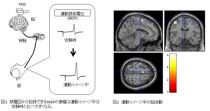Coaching skills based on body image research, and sports promotion activities based on them

- researcher's name
-
about researcher KANOSUE, Kazuyuki Professor (retired)
- affiliation
- research field
-
Sports science,Environmental physiology (including physical medicine and nutritional physiology),Neurophysiology/General neuroscience
- keyword
-
background
Improving sports motor skills is not a simple matter of strengthening muscles. The series of motor control processes, during the course of a signal being sent out from the higher brain and reaching the muscle to move it, are corrected in order to create a new movement. Scientific analysis of this method of acquiring new moves will offer suggestions for coaching methods that are customized to the needs of individuals, and contribute to management of disabilities, supervision of conditioning and improvements in the sport.
summary
We are measuring and analyzing brain activity during “body imaging” in which people recall movements without actual physical movement, and the gap between what people consider to be the ideal movement and reality. Noninvasive brain imaging and biomechanical measurements are carried out specifically on somersaults and kicking motions, motions that involve cutaneous sensations, and movements using tools.
application/development
Proposing training and coaching methods in accordance with motor ability.
Promoting life-long involvement in sports targeting children and the elderly, and collaborating in initiatives with fitness clubs and local communities.
predominance
Potential to offer proposals for methods that do not rely on simple repetitive training, but are effective and allow the greater enjoyment of sports.
purpose of providing seeds
Sponsord research, Collaboration research, Technical consultation
remarks
Reader, Sports Sciences for the Promotion of Active Life, GCOE Program
material
same researcher's seeds
posted:
2014/05/21





